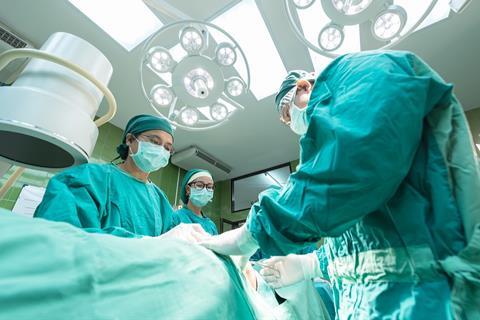NYU Abu Dhabi (NYUAD) engineers studying ventilation systems in surgical operating theaters have found that traditional ventilation systems may inadvertently facilitate the circulation of aerosolized pathogen-carrying particles. This, as a result, puts surgical teams at a higher risk of infection by COVID-19 and other airborne diseases.

Using basic engineering tools, including computational modeling and experimental procedures in operating theaters, the researchers identified shortcomings in traditional ventilation systems and suggested a flexible, new ventilation framework. Their findings bring awareness to limitations of current ventilation systems in surgical theaters, and would make a variety of surgical procedures safer for patients and clinical staff alike.
The transmission of airborne germs from patients to surgical teams is a major concern, heightened during the COVID-19 pandemic, when millions of elective surgeries worldwide were canceled or postponed because of safety concerns. Ventilation systems are primarily designed to protect patients from airborne contamination and surgical site infection by pushing air away from the area around the operating table. However, this configuration circulates patient-released airborne particles – especially those produced through the use of powered surgical tools – within the room, exposing the surgical team to pathogens and potential infection.
Pandemic study
The study “Ventilation-Based Strategy to Manage Intraoperative Aerosol Viral Transmission in the Era of SARS-CoV-2,” published in the journal Life Journal, began amidst the pandemic to determine the efficiency of ventilation systems in operating theaters where a COVID-19 positive patient was being treated.
Working alongside surgeons from Cleveland Clinic Abu Dhabi, the NYUAD research team, led by Mohammad Qasaimeh, director of the University’s Advanced Microfluidics and Microdevices Laboratory (AMMLab), used experimental and computation engineering tools to study airflow in active operating theaters.
The NYUAD researchers found that traditional operating room ventilation systems tend to spread germs around, especially toward the perimeter of the operating theater. This puts the supporting surgical staff at a higher risk, contradicting the common practice of moving them further away from the patient towards the operating room walls.
New design
Through a combination of numerical modeling and basic experimental validation, the researchers, along with the surgeons, identified key parameters influencing airflow patterns and particle circulation in different operating theater configurations. They present a new, simple design for O.R. ventilation systems that can adapt to different situations during surgeries, such as when there is “surgical smoke” during an operation.
“Our research holds significant implications and awareness for healthcare safety protocols, promising to revolutionize operating room practices and reduce the risk of airborne transmission in high-risk environments,” said Qasaimeh. “By improving airflow, we present simple solutions for safer surgeries and better outcomes, equipping our healthcare system to more effectively handle future outbreaks.”
Led by Qasaimeh, the study was performed by NYUAD researchers Ayoola Brimmo and Ayoub Glia, and in collaboration with several surgeons from CCAD including Juan S. Barajas-Gamboa, Carlos Abril, and Matthew Kroh.
Topics
- NYU Abu Dhabi
- aerosolized pathogen-carrying particles
- Ayoola Brimmo
- Ayoub Glia
- Carlos Abril
- Cleveland Clinic Abu Dhabi
- COVID-19
- Future Technologies
- Infection Prevention & Control
- Infectious Disease
- Innovation News
- Juan S. Barajas-Gamboa
- Matthew Kroh
- Medical Microbiology
- Middle East & Africa
- Mohammad Qasaimeh
- One Health
- SARS-CoV-2
- surgical operating theaters
- ventilation systems







No comments yet